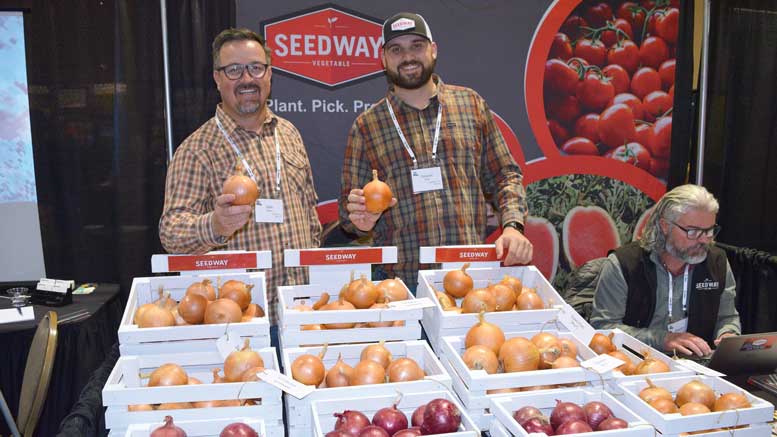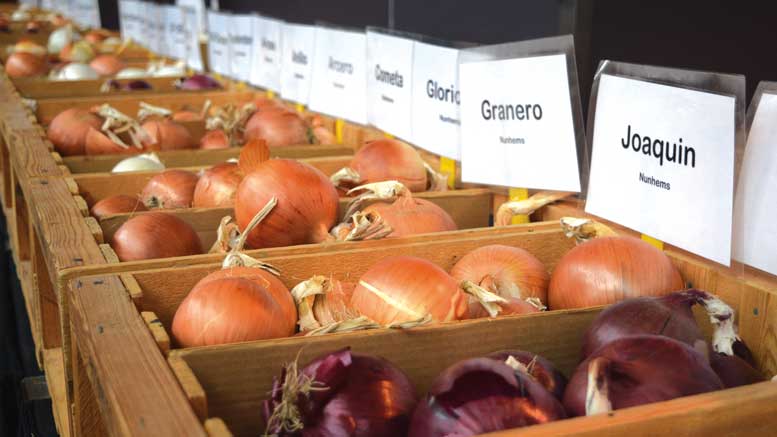|
Click to listen to this article
|
Story and photos by Denise Keller, Editor
Extreme weather is creating more challenges in the field. Waning product efficacy is making disease management more difficult. With all this and other pressing issues in the onion industry, there was plenty to talk about at the Pacific Northwest Vegetable Association Conference, held Nov. 16-17 in Kennewick, Washington.

Cool, Wet Spring
James Woodhall, a plant pathologist at the University of Idaho, spoke about the impact of a cool, wet spring on diseases of onions, a timely topic given Pacific Northwest weather conditions during spring 2022.

If Mother Nature repeats herself with another cool, wet spring, growers should be on the lookout for soil-borne diseases, including those caused by Fusarium, Rhizoctonia and Pythium. Fusarium, which can cause seedling damping off and seed rot, is associated with pinkish or sometimes yellow roots. Rhizoctonia shows up in brown roots and causes seed rot, root rot and stunting. Pythium can cause symptoms soon after planting, including gray, water-soaked roots that are easy to slough off, as well as seed rot, seedling damping off and root rot, ultimately leading to smaller bulbs.
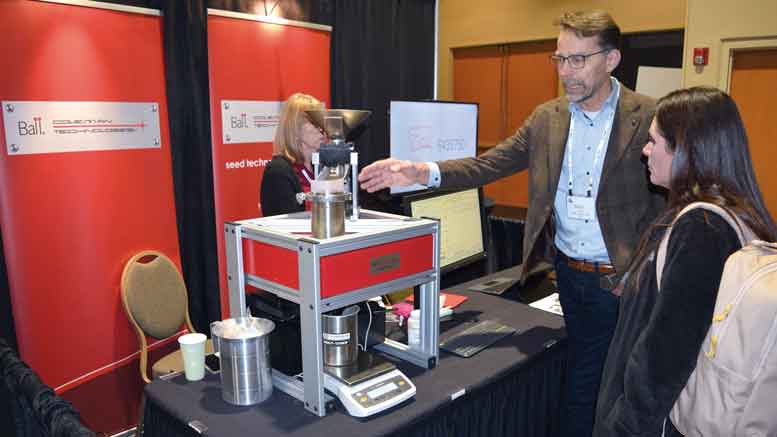
In addition to soil-borne diseases, wet spring weather can exacerbate foliar diseases including downy mildew and Stemphylium leaf blight. Wetter springs have shown higher levels of Stemphylium spores, according to Woodhall. Cool, wet spring weather may also involve frost, which can cause leaf tip damage. This can enable pathogens such as Stempylium to colonize in the leaves.
“Is it all bad news?” Woodhall asked. “I actually think that it’s not. I’d rather have a cool start than a really, really hot start like we had in 2021. It’s all about getting the bulbs at a decent size before those really hot summer temperatures hit.”

Experiencing a cool, wet spring is not the end of the world, Woodhall said. However, growers need to know which soil-borne diseases are present in their fields. Soil testing may be useful in certain instances to monitor a particular problem but can be difficult to deploy effectively for pathogens such as Pythium, Rhizoctonia and Fusarium due to the large species complexes.
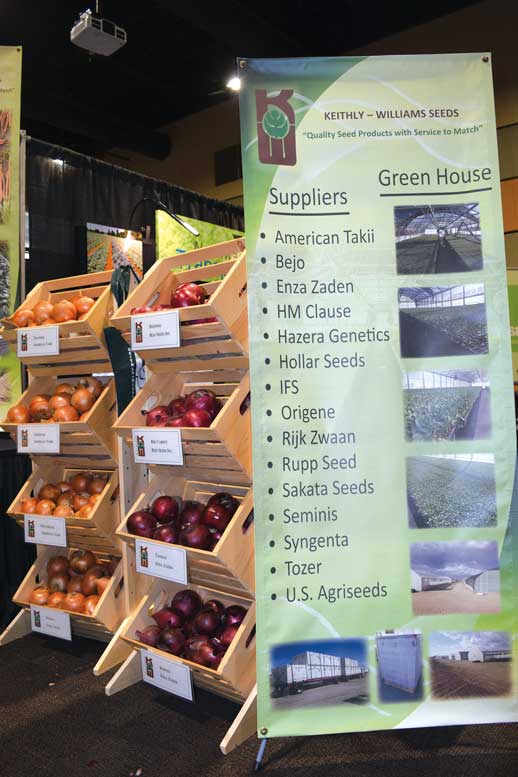
To manage soil-borne diseases, growers should use treated seed and consider using a soil treatment at planting. Fumigation will also play a part in disease management. Woodhall reminded growers that Pythium is an oomycete and requires a different class of fungicides to control than true fungi. He rounded out his recommendations with crop rotation, good ground prep, avoiding compaction, and scouting.
When scouting for soil-borne diseases, look for yellowing of leaves and uneven stand, paying particular attention to patchy distribution rather than uniform distribution, which might suggest a chemical issue as opposed to a soil-borne disease. Pull up plants and look at the roots, and consult a lab when necessary, Woodhall advised.

Copper Tolerance
Talk of tolerance to copper products generated considerable interest from growers and field reps during a presentation from plant pathologist Lindsey du Toit with Washington State University. du Toit delivered an update on Stop the Rot, a four-year multi-state research project on onion bacterial diseases.
Among research results, she reported on the team’s preliminary work on copper tolerance in strains of bacteria collected for the project. With an extensive collection of bacteria from across the U.S. and the full DNA sequences generated for a subset of these strains, researchers at the University of Georgia are screening the genomes of the bacteria for the presence of copper tolerance genes. They have found copper tolerance genes in about 50 percent of the strains of Pantoea agglomerans screened so far and are testing whether the presence of these genes correlates with actual tolerance of copper. Some strains collected from onion plants in the Columbia Basin were able to tolerate up to 300 ppm copper, which is very high, according to du Toit.
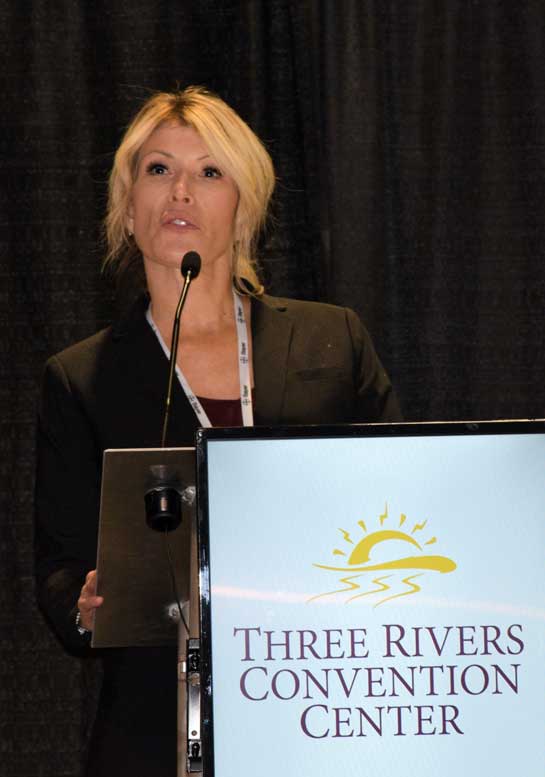
There’s much work to be done, but du Toit believes it’s extremely important work as it potentially will demonstrate how much control growers in various regions realistically can expect from copper applications. In the Columbia Basin, du Toit and colleagues have seen almost no control of onion bacterial rots in four years of field trials with various copper products. In contrast, some degree of control of bacterial diseases has been observed in trials in Vidalia, Georgia. The Stop the Rot team plans to evaluate bacterial strains from different regions to see if there are differences in the prevalence and degree of copper tolerance among geographic regions and among strains within regions. With the very extensive use of copper sprays in the Columbia Basin on a wide range of crops, it would not be at all surprising to find a high prevalence of copper tolerance, du Toit said.
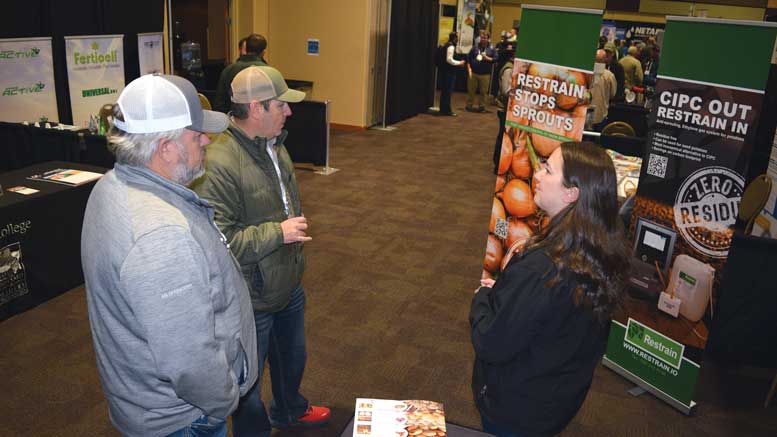
“If so, it will be a paradigm shift in how growers in this region approach management of bacterial diseases in onion crops and other crops,” du Toit said. “As I’ve stated all along since the start of this Stop the Rot project, effective management of bacterial diseases in onion crops is primarily going to be achieved with careful cultural practices – particularly irrigation, fertility and end-of-season cultural practices that facilitate rapid field curing of the necks of onion bulbs.”
